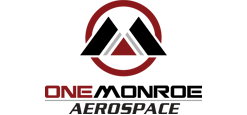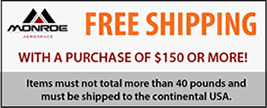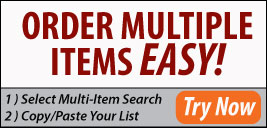The aerospace industry demands precision-engineered mobility solutions that can withstand extreme conditions while maintaining operational safety and efficiency. Aircraft assembly lines, ground support equipment, and maintenance operations all rely on specialized casters designed to handle massive loads and provide smooth, controlled movement.
Aerospace casters are specifically engineered mobility components that combine heavy-duty load capacity, maintenance-free operation, and specialized features like spring-loaded suspension systems to meet the rigorous demands of aviation applications. These components differ significantly from standard industrial casters through their enhanced durability, precise manufacturing tolerances, and ability to perform reliably in challenging aerospace environments.
Understanding the technical specifications, material considerations, and application requirements becomes essential when selecting casters for aerospace operations. From kingpinless swivel construction to specialized wheel materials, each component plays a critical role in ensuring safe and efficient aircraft handling, ground support equipment mobility, and manufacturing facility operations.
What Are Aerospace Casters?
Aerospace casters are specialized mobility components engineered to meet the extreme demands of aviation and aerospace industries. These heavy-duty devices handle massive loads while providing precise movement capabilities in critical applications.
Definition and Core Functions
Aerospace casters are wheeled mobility devices specifically designed for moving heavy tooling, aircraft components, and ground support equipment within aviation environments. These casters serve as the foundation for dollies, carts, and transport systems used throughout aircraft manufacturing facilities, maintenance hangars, and airport operations.
The primary function involves load distribution and movement facilitation. Each caster typically handles weight capacities ranging from 5,000 to over 50,000 pounds. This extreme load-bearing capacity enables safe transportation of aircraft engines, wing assemblies, and other massive aerospace components.
These casters incorporate advanced shock absorption systems to protect sensitive equipment during transport. Spring-loaded mechanisms and pneumatic wheels reduce vibrations that could damage delicate instruments or precision-manufactured parts.
Distinguishing Features from Standard Casters
Aerospace casters differ significantly from standard industrial casters in material composition and construction standards. They utilize #356 aluminum for superior corrosion resistance and tensile strength. This aluminum grade provides optimal weight-to-strength ratios critical in aviation applications.
Military and aerospace specifications govern their design and testing protocols. Standard casters cannot withstand the harsh conditions present in aircraft hangars, including exposure to jet fuel, hydraulic fluids, and extreme temperature variations.
Precision engineering enables exact positioning capabilities. Swivel locks and specialized braking systems provide millimeter-accurate placement of heavy loads. Maintenance-free designs eliminate lubrication requirements through advanced sealed bearing systems.
Load capacity represents the most significant distinction. While standard casters typically handle hundreds to low thousands of pounds, aerospace variants manage tens of thousands of pounds per unit.
Common Aerospace Caster Applications
Ground support equipment represents the largest application category. Baggage carts, fuel trucks, and aircraft tugs rely on these specialized casters for daily airport operations. Pneumatic wheels provide necessary shock absorption for outdoor tarmac conditions.
Aircraft manufacturing facilities utilize heavy-duty casters for component assembly lines. Wing jigs, fuselage dollies, and engine transport systems depend on precision movement capabilities. Swivel casters enable 360-degree rotation for maneuvering in tight manufacturing spaces.
Maintenance operations require casters capable of supporting aircraft during servicing. Hangar equipment, including aircraft jacks and maintenance platforms, incorporates these robust mobility solutions.
Military applications demand extreme durability standards. Naval shipboard conditions require specialized braking systems and corrosion-resistant materials to secure cargo during transport.
Key Types of Aerospace Casters
Aerospace manufacturing requires specialized caster solutions that address unique challenges like heavy loads, vibration dampening, and maintenance accessibility. These applications demand casters with enhanced durability features and materials designed to withstand demanding industrial environments.
Shock Absorbing Aerospace Casters
Shock absorbing casters protect sensitive equipment during transport by dampening vibrations and impacts. These units incorporate specialized springs or elastomeric materials within their construction.
The shock absorption mechanism prevents damage to delicate aerospace components during movement across uneven surfaces. Internal dampening systems reduce the transmission of floor irregularities to the equipment being transported.
Key Features:
- Internal spring mechanisms
- Elastomeric dampening materials
- Vibration isolation capabilities
- Impact resistance
These casters prove essential when transporting precision instruments, electronic components, or partially assembled aircraft parts. The dampening effect maintains equipment alignment and prevents micro-damages that could compromise performance.
Load ratings for shock absorbing models range from 200 to 2,000 pounds per caster depending on design requirements.
Spring-Loaded Caster Designs
Spring-loaded casters feature integrated spring systems that provide continuous load adjustment and improved mobility. The spring mechanism allows for better weight distribution across multiple casters.
These designs automatically compensate for uneven loading conditions by adjusting individual caster heights. The spring action maintains consistent floor contact across all wheels on a multi-caster system.
Spring Configuration Types:
- Coil springs within the swivel housing
- Leaf spring assemblies
- Pneumatic spring systems
- Composite spring materials
The continuous adjustment capability reduces stress on individual casters and extends operational life. Spring-loaded designs excel in applications where load distribution varies during transport or positioning.
Manufacturing facilities use these casters for heavy jigs, assembly fixtures, and large component transport systems.
Kingpinless and Maintenance-Free Solutions
Kingpinless casters eliminate the traditional center pin design in favor of reinforced raceway bearing systems. This construction significantly reduces maintenance requirements while increasing load capacity.
The reinforced swivel raceway distributes stress across a larger bearing surface area. This design reduces the manual effort required to initiate movement and provides smoother operation under heavy loads.
Advantages of Kingpinless Design:
- Higher load capacity – up to 40% increase over traditional designs
- Reduced maintenance – no kingpin lubrication required
- Enhanced durability – better stress distribution
- Improved maneuverability – easier swivel initiation
These casters excel in towed applications where lateral stress occurs frequently. The absence of a center failure point makes them ideal for heavy-duty aerospace manufacturing equipment.
Maintenance intervals extend significantly compared to traditional kingpin designs, reducing operational downtime.
Specialized Wheels and Materials
Aerospace casters utilize advanced wheel materials designed for specific operational requirements. Material selection impacts load capacity, floor protection, and chemical resistance.
Common Wheel Materials:
| Material | Load Capacity | Floor Protection | Chemical Resistance |
|---|---|---|---|
| Polyurethane | High | Excellent | Good |
| Steel | Very High | Poor | Excellent |
| Rubber | Medium | Good | Fair |
| Nylon | High | Fair | Good |
Polyurethane wheels provide non-marking performance while rejecting floor debris during operation. Steel wheels offer maximum load capacity for extremely heavy applications.
Specialized Features:
- Non-marking compounds
- Debris rejection tread patterns
- Corrosion-resistant coatings
- Temperature-resistant formulations
Dual wheel configurations distribute loads across wider contact areas, reducing floor pressure and improving stability. These designs prove valuable for transporting large aircraft assemblies or heavy tooling equipment.
Material selection depends on specific application requirements including load capacity, floor type, and environmental conditions within the manufacturing facility.
Engineering Considerations for Heavy Loads
Aerospace operations require casters engineered to handle extreme weight capacities while maintaining precise control and protecting valuable equipment. These systems must support loads ranging from 5,000 to over 50,000 pounds per caster while ensuring safe maneuverability across various surfaces.
Load Capacity Requirements in Aerospace
Aerospace casters must accommodate extraordinarily heavy equipment including aircraft components, tooling fixtures, and ground support equipment. Weight capacities typically range from 5,000 pounds to over 50,000 pounds per individual caster.
Engineers calculate load distribution across multiple caster points to prevent overloading. The total equipment weight gets divided by the number of casters, with additional safety factors applied for dynamic loads and uneven weight distribution.
Critical load factors include:
- Static weight of the equipment
- Dynamic forces during movement
- Uneven load distribution
- Impact loads from stopping and starting
Heavy-duty swivel casters provide 360-degree rotation capability essential for maneuvering large aerospace components in confined spaces. The swivel mechanism must maintain structural integrity under maximum load conditions.
Extra heavy-duty designs incorporate reinforced mounting plates and enhanced bearing systems. These components resist deformation and wear under continuous heavy-load operations.
Handling Heavy Equipment Safely
Safe movement of heavy aerospace equipment requires specialized caster features designed to prevent accidents and equipment damage. Spring-loaded casters provide critical shock absorption that protects sensitive components during transport.
Braking systems become essential safety features for heavy loads. Deadman brakes automatically engage when operators release control, preventing runaway equipment on inclined surfaces.
Essential safety features:
- Swivel locks for precise positioning
- Total lock brakes for complete immobilization
- Running gear brakes for controlled deceleration
- Positive pressure seals against contamination
Dual-wheel configurations distribute weight more effectively and provide redundancy if one wheel fails. Pry-bar sockets enable manual positioning adjustments for long, heavy tooling loads.
Operators must verify weight ratings before use and conduct regular inspections of mounting hardware and wheel integrity.
Floor Protection and Maneuverability
Heavy aerospace equipment can damage facility floors without proper wheel selection and load distribution techniques. Polyurethane wheels offer excellent floor protection while maintaining durability under heavy loads.
Pneumatic wheels provide superior shock absorption and adapt to uneven surfaces common in hangar environments. These wheels reduce vibration transmission to sensitive aerospace components during transport.
Wheel material considerations:
| Material | Load Capacity | Floor Protection | Durability |
|---|---|---|---|
| Polyurethane | High | Excellent | Good |
| Pneumatic | High | Very Good | Good |
| Phenolic | Very High | Fair | Excellent |
| Steel | Maximum | Poor | Maximum |
Wide wheel profiles distribute load pressure across larger floor areas, reducing point loading that can crack concrete surfaces. This distribution becomes critical when moving equipment exceeding 10,000 pounds per caster.
Sealed bearing systems prevent contamination while reducing rolling resistance. Lower rolling resistance enables easier manual maneuvering of heavy equipment and reduces operator fatigue during extended use.
Critical Aerospace Applications
Aerospace casters serve essential functions across multiple critical operations, from ground support equipment that services commercial aircraft to specialized tooling systems that handle sensitive components during manufacturing. These applications demand exceptional load capacity, precision control, and reliability under demanding conditions.
Ground Support Equipment Mobility
Ground support equipment requires casters that can navigate both indoor and outdoor environments while maintaining precise control. Baggage carts, fuel trucks, and maintenance platforms depend on robust mobility solutions that perform reliably on tarmac surfaces.
Heavy loads present significant challenges in ground support operations. Equipment must transport cargo containers, aviation fuel, and maintenance tools across varying terrain conditions. Pneumatic wheels provide superior shock absorption for these applications.
Corrosion resistance becomes critical for outdoor ground support equipment. Aluminum construction offers lightweight durability while withstanding exposure to weather, de-icing chemicals, and aviation fluids.
Key Ground Support Applications:
- Baggage handling systems
- Fuel service trucks
- Maintenance platforms
- Cargo loading equipment
- Aircraft tugs and pushback tractors
Aircraft Dollies and Component Transport
Aircraft dollies transport engines, wings, fuselage sections, and other major components throughout manufacturing and maintenance facilities. These specialized transport systems require casters with exceptional load ratings ranging from 5,000 to over 50,000 pounds per unit.
Swivel casters enable precise maneuvering of oversized aircraft components in confined spaces. The 360-degree rotation capability allows operators to navigate tight corners and position components accurately for assembly or maintenance procedures.
Spring-loaded casters provide critical shock absorption during component transport. This feature protects sensitive avionics, composite materials, and precision-machined parts from vibration damage during movement across facility floors.
Braking systems ensure secure positioning during loading and unloading operations. Deadman brakes and running gear brakes prevent unexpected movement of heavy loads during critical handling procedures.
Aerospace Manufacturing and Assembly
Manufacturing environments demand casters that combine high load capacity with precision positioning capabilities. Assembly line equipment, tooling fixtures, and component storage systems rely on specialized mobility solutions.
Clean room compatibility requirements influence caster selection in satellite and spacecraft manufacturing. Non-marking wheels prevent contamination while maintaining smooth operation on specialized flooring systems.
Temperature resistance becomes essential for manufacturing processes involving heat treatment, composite curing, and welding operations. Phenolic wheels withstand high-temperature environments without degrading performance.
Manufacturing Caster Requirements:
- Load capacities: 1,000-15,000+ pounds
- Precision swivel locks for accurate positioning
- Maintenance-free lubrication systems
- Corrosion-resistant materials
- Non-marking wheel compounds
Tooling Carts and Material Handling
Aerospace tooling carts transport specialized equipment, measuring instruments, and assembly tools throughout production facilities. These mobile workstations require smooth-rolling casters that protect sensitive instruments from vibration.
Dual wheel configurations provide enhanced stability for long tooling loads. Pry-bar sockets enable easy maneuvering when standard pushing and pulling methods prove insufficient for heavy loads.
Polyurethane wheels offer optimal performance on finished facility floors. Their non-marking properties prevent damage to expensive flooring while providing quiet operation in precision manufacturing environments.
Sealed-hub construction protects internal components from contamination in machine shop environments. This design eliminates maintenance requirements while ensuring consistent performance under demanding industrial conditions.
Material Selection and Performance Factors
Aerospace casters require specific materials that withstand harsh conditions while maintaining precision performance. Key considerations include aluminum’s corrosion resistance, thermal stability across temperature extremes, and noise reduction properties that enhance workplace safety.
Corrosion Resistance and Durability
Aluminum stands as the preferred material for aerospace casters due to its exceptional corrosion resistance properties. #356 aluminum offers superior tensile strength and uniform sectional properties that meet aerospace specifications.
The material’s resistance to moisture and chemical exposure makes it ideal for hangar environments. Aerospace facilities often experience high humidity and exposure to cleaning solvents that can degrade inferior materials.
Corrosion-resistant aluminum casters maintain structural integrity in wet conditions. They resist degradation from steam, detergents, and abrasives commonly found in aerospace maintenance areas.
Durability requirements extend beyond material composition to protective coatings. High-performance lubricants with elevated melting points ensure long-term operation without maintenance intervention.
Positive pressure seals protect internal components from contaminants. This design prevents premature failure in demanding aerospace environments where caster reliability directly impacts safety.
Temperature and Environmental Challenges
Aerospace environments subject casters to extreme temperature variations that standard materials cannot withstand. Phenolic wheels resist high temperatures generated by aerospace manufacturing processes and engine testing areas.
Temperature cycling between hot manufacturing zones and climate-controlled assembly areas stresses caster materials. Aluminum maintains dimensional stability across these thermal ranges without compromising load capacity.
Steel wheels provide maximum durability in extreme conditions but require careful surface protection. They excel in applications involving heavy equipment movement across rough surfaces.
Environmental factors include exposure to hydraulic fluids, jet fuel, and specialized aerospace chemicals. Material selection must account for chemical compatibility to prevent degradation over operational lifespans.
Outdoor storage areas expose casters to UV radiation and weather extremes. Aerospace-grade materials resist UV degradation while maintaining structural properties across temperature ranges.
Noise Reduction and Ergonomics
Pneumatic wheels significantly reduce noise levels during heavy equipment transport through aerospace facilities. Their softer composition absorbs impact vibrations that would otherwise generate excessive noise.
Spring-loaded casters provide superior shock absorption compared to conventional designs. They reduce noise transmission while protecting sensitive aerospace components from handling damage.
Polyurethane wheels offer excellent noise reduction properties without marking finished floors. This combination proves essential in clean assembly environments where floor protection matters.
Cushion tread designs minimize rolling resistance while dampening vibrations. Lower rolling resistance reduces operator fatigue during extended periods of heavy equipment maneuvering.
Ergonomic benefits extend to reduced physical strain on personnel. Properly selected caster materials decrease push/pull forces required for moving aerospace tooling and equipment.
Choosing the Right Aerospace Caster Supplier
Selecting an aerospace caster supplier requires evaluating their compliance with industry standards, ability to provide custom solutions, and ongoing support capabilities. These factors directly impact operational safety and long-term equipment performance.
Quality and Compliance Standards
Aerospace caster suppliers must demonstrate adherence to strict military and aerospace specifications. These standards ensure casters can withstand extreme conditions without failure.
Look for suppliers with ISO 9001 certification and aerospace-specific quality management systems. This certification indicates systematic quality control processes throughout manufacturing.
Verify that suppliers conduct rigorous testing protocols. Casters should undergo load testing, shock absorption testing, and environmental stress testing before approval.
Material certifications are equally important. Suppliers should provide documentation for aluminum grades, steel compositions, and wheel materials used in caster construction.
Request documentation of compliance with relevant aerospace standards such as AS9100 or military specifications. This paperwork validates the supplier’s commitment to industry requirements.
Custom Caster Design Services
Many aerospace applications require specialized caster solutions beyond standard catalog offerings. The right supplier should offer comprehensive custom design capabilities.
Evaluate the supplier’s engineering team expertise in aerospace applications. Engineers should understand load distribution, shock absorption requirements, and environmental challenges specific to aviation facilities.
Custom design services should include load capacity analysis, wheel material selection, and brake system integration. Suppliers must calculate precise specifications based on actual operating conditions.
Prototyping capabilities allow for testing before full production. This service reduces risk and ensures custom casters meet performance requirements.
Look for suppliers who can modify existing designs or create completely new solutions. This flexibility ensures optimal caster performance for unique aerospace tooling needs.



